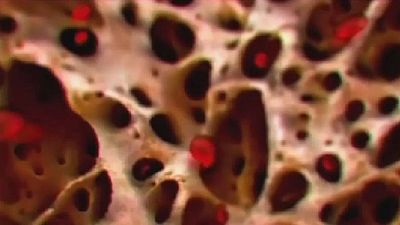USA
Scientists in the U.S. have unveiled results of a small clinical trial that could mean an effective “cure” for sickle cell anemia, the painful and debilitating disease that inflicts many millions of people across the globe, mostly of African heritage and including some 100,000 African Americans in the U.S.
Researchers at the National Institutes of Health (NIH) say they have used gene therapy techniques to add a “corrected” gene for healthy red blood cells into the bodies of nine test patients, replacing their diseased red blood cells caused by sickle cell anemia and effectively ridding them of signs of the disease.
NIH Director Francis Collins described the trial results as seemingly “spectacular”.
“When you look at their blood counts and their blood smears, it looks like they don’t have it anymore,” Collins told Reuters on Monday (March 11) from his office at the NIH in Bethesda, Maryland, just outside Washington, D.C.
“Now, it’s early days. We’ve only followed these patients for a year at the most but it looks like it would be fair to say this could be a cure,” he continued.
Sickle cell disease is an inherited blood disorder that causes protein crystals to form inside red blood cells, changing their shape from a flat disk into a crescent or sickle shape that then clogs up the small blood vessels and results in terrible episodes of pain and organ damage.
Collins says the disorder comes essentially from a “misspelling” in the gene for one of the proteins.
In the clinical trial, a normal copy of the gene with the “correct spelling” for healthy red blood cells was placed inside a virus that allowed the good gene to multiply many times over.
The virus was then introduced into the patient’s bodies via bone marrow transplants, but only after toxic chemotherapy to “wipe out” their normal bone marrow in order to create “space” for the corrected genes to go, Collins told Reuters.
Within two or three months, the nine patients showed signs of remission and were starting to discover normal health for the first time in their lives, the researchers said.
“We’re simply adding the gene. We leave the defective gene intact. This is what is called gene addition therapy,” Dr. John Tisdale, the molecular hematologist behind the clinical trial, told Reuters from the NIH’s Cellular and Molecular Therapeutics lab where the testing for the trial was conducted.
The virus in this case was HIV but it that lacked the harmful elements that could cause AIDS, the researchers said. Tisdale called the HIV virus a “Trojan horse” that won’t cause AIDS but was very good at delivering the corrected gene into the body.
For Tisdale, the most remarkable moment of the trial was when he noticed the normalizing hemoglobin levels in his patients.
“To have their hemoglobin go up to normal and then to look inside the red cell and see what kind of hemoglobin it is and find it be derived from the vector (virus) that we put in their cells was just extraordinary,” he said.
Director Collins says sickle cell anemia is a frustrating disease for patients and doctors alike. There is no universal cure and most of the current treatment is limited to simply pain management.
And the pain is excruciating.
“There’s so many ways to describe it,” said 29-year-old Mobile, Alabama, resident Lynndrick Holmes, who became one of the nine test patients in the NIH clinical trial after searching for alternative treatment options on the internet.
“I heard people describe it to feel like chain saws are in your blood stream. That’s similar,” he said. “But for me, it feels like my body is starving for oxygen and it’s suffocating… I feel myself dying.”
Holmes said he started to feel better about a month after his bone marrow transplant. On Monday, 100 days into his treatment, he met with Dr. Tisdale and his staff clinician, Dr. Matthew Hsieh (pronounced Shay), before flying back to Mobile to rejoin his family.
“I’m not the same Lynndrick. I’m going to be like, yeah, that happened, I was a part of that and I don’t have sickle cell no more.”
The researchers at the NIH believe there are some 7,000 other diseases that could benefit from the single-gene addition therapy used in the sickle cell trial, including a white blood cell disorder called chronic granuloma and possibly one day cystic fibrosis.
Neither Collins nor Tisdale think the lengthy and costly protocol of the clinical trial — which includes chemotherapy and months of close medical supervision — can be scaled out to help the millions of sickle cell patients in Africa where the disease is pronounced especially in the Sub-Sahara.
But they believe the basic premise of introducing a corrected gene into the body holds promise for Africa provided a simpler, cheaper and less toxic delivery system than bone marrow transplant and the accompanying chemotherapy can be found.
“Not overnight,” Director Collins said. “This is going to take a lot of hard work over many years. But the proof of the approach being potentially curative is now in front of us.”
Reuters














01:37
South Africa's refurbished Digital Dome set to open in February 2025
01:05
Nigeria to roll out a new malaria vaccine
02:15
South Africa's health train offers free care to remote communities
01:50
Brazilian mothers lead fight to secure access to medical cannabis
Go to video
AI tools for ADHD: Boost task Management
00:56
China's 'Peace Ark' hospital ship brings medical aid to Mozambique